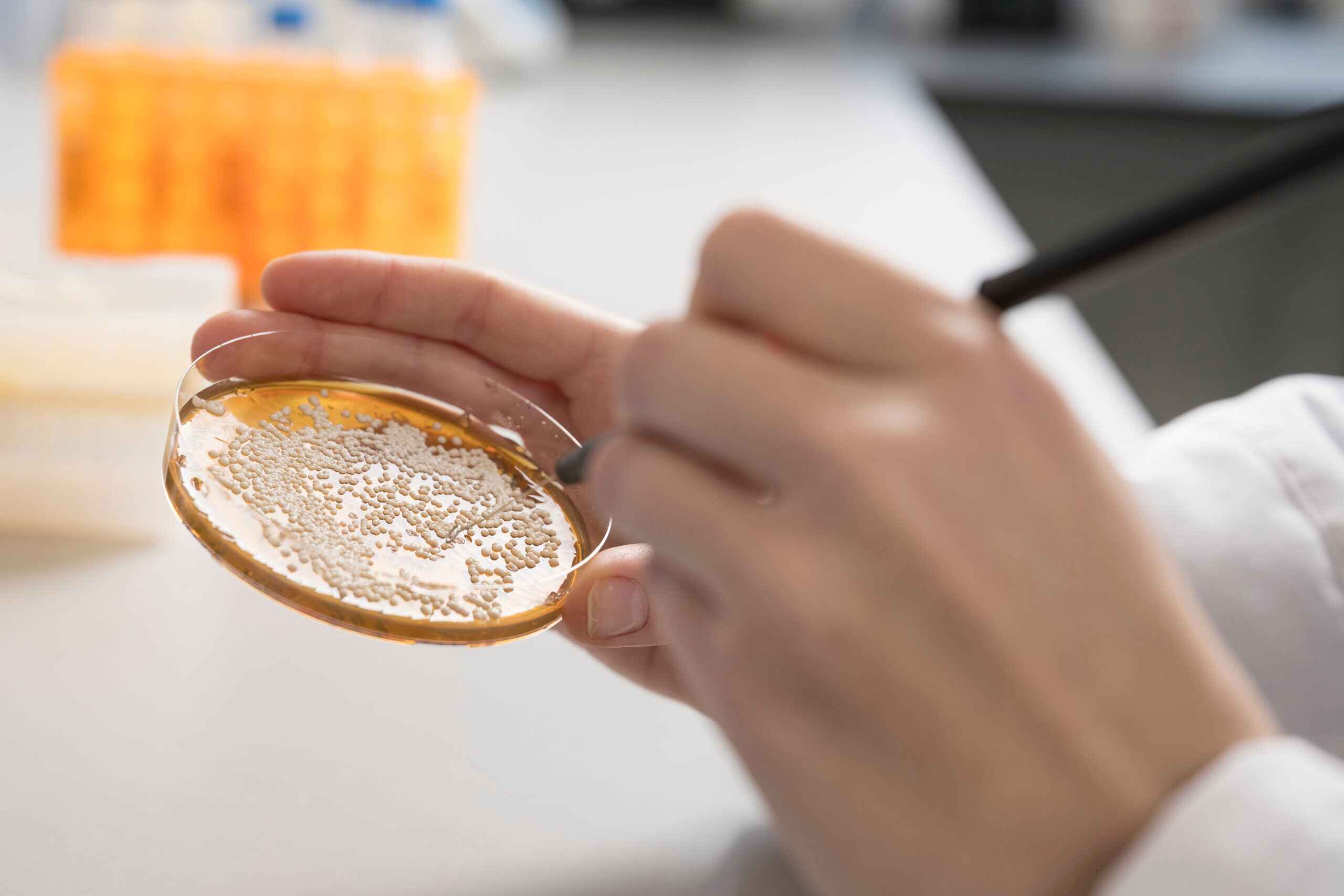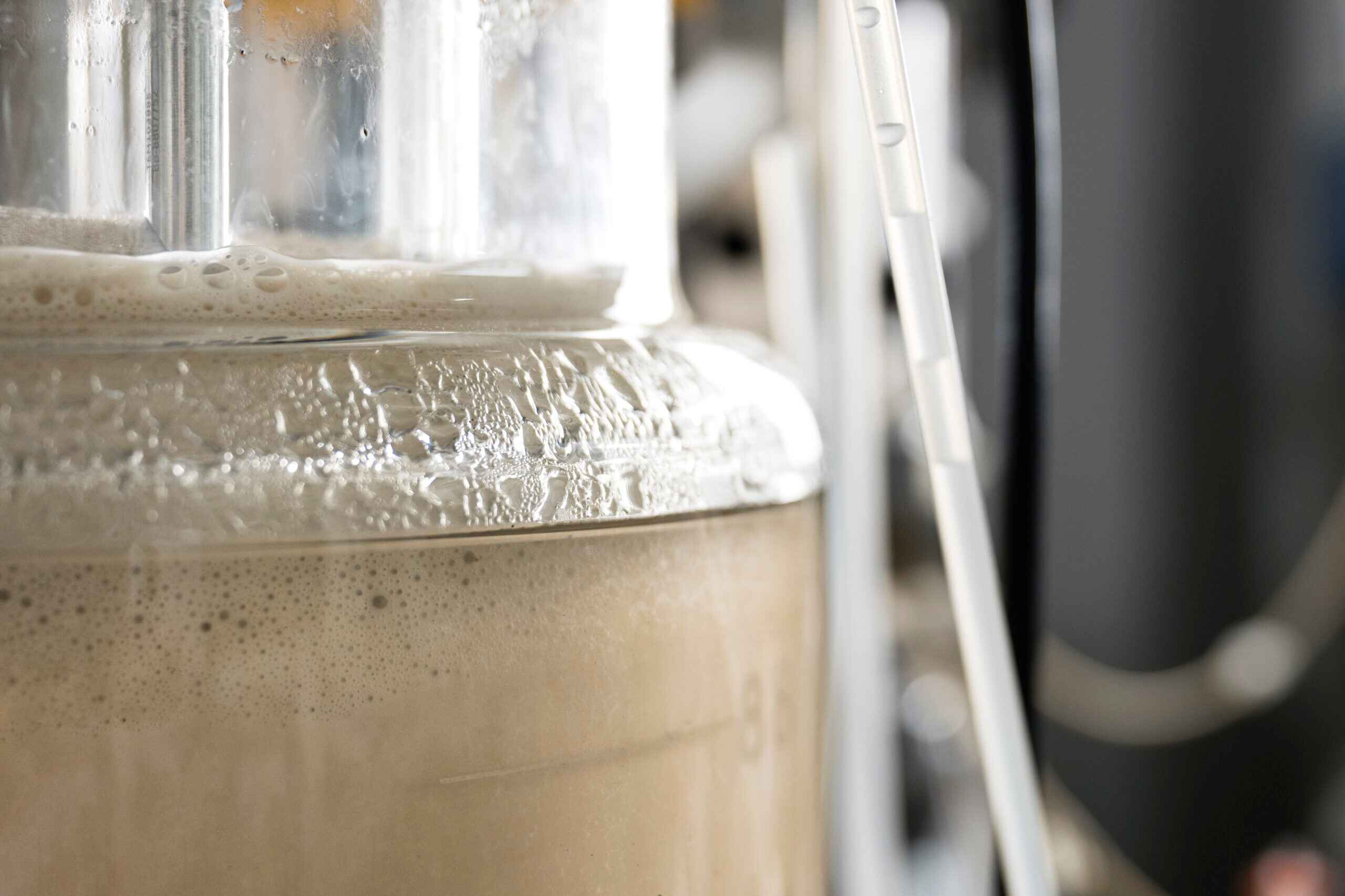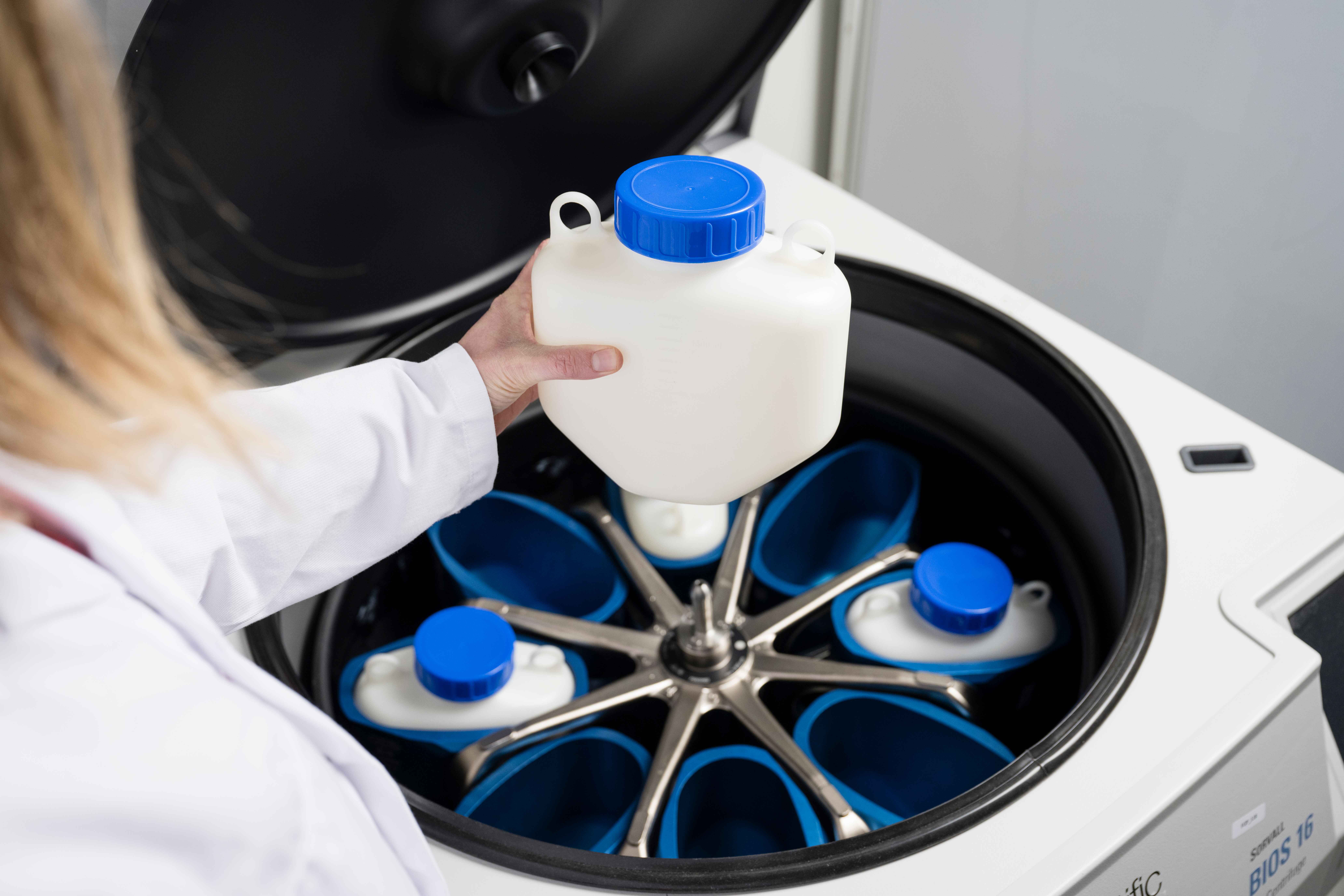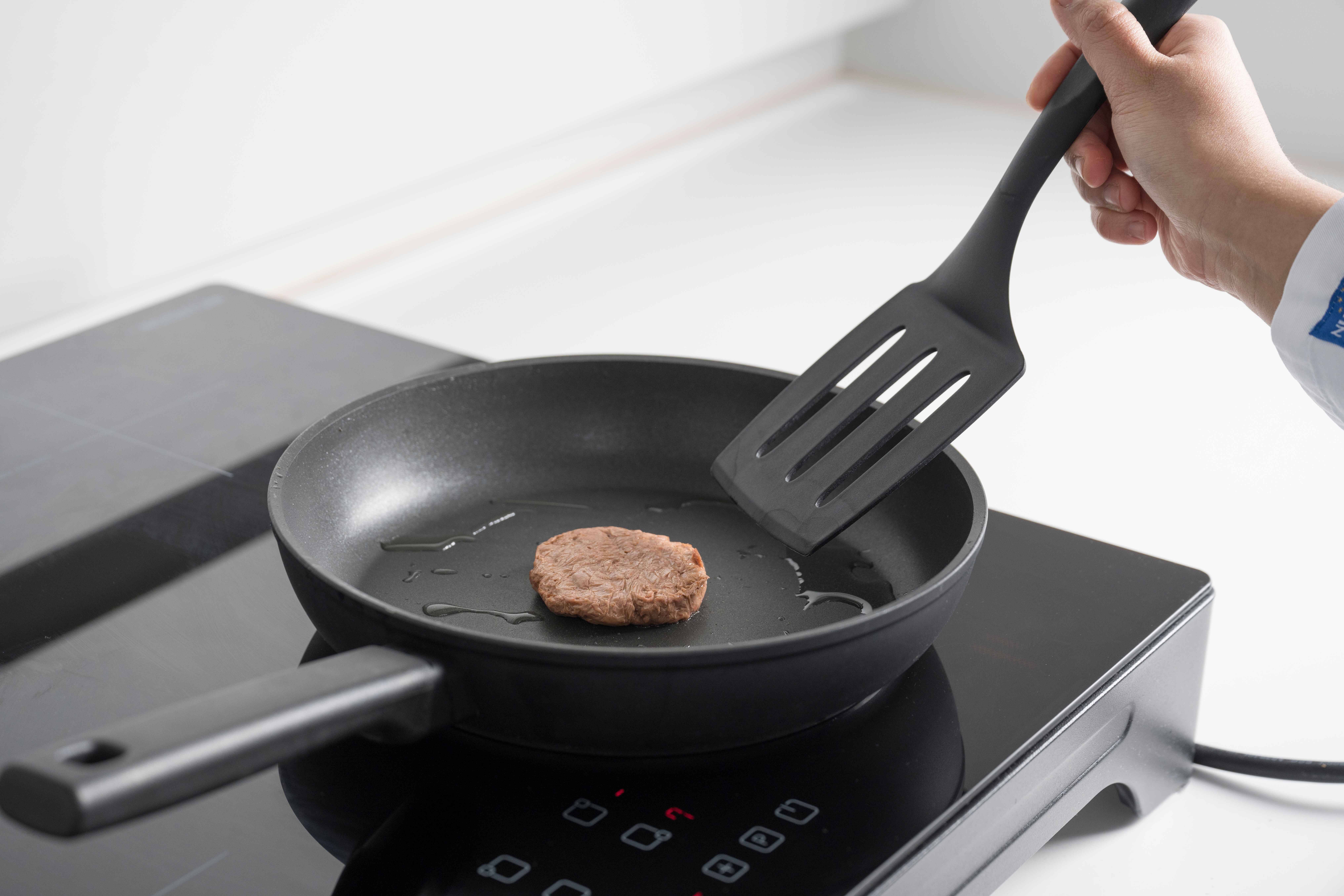First, we hunted.
Through precision fermentation, Paleo brews animal proteins by using yeast. We instruct the yeast to make our animal protein, simply by introducing a piece of DNA code for myoglobin into the yeast cell.
First, we hunted.
Then, we bred.
Now, we brew.
Through precision fermentation, Paleo brews animal proteins by using yeast. We instruct the yeast to make our animal protein, simply by introducing a piece of DNA code for myoglobin into the yeast cell.
What’s so unique about our process, is that our yeast releases the proteins into its environment. This is called extracellular secretion and allows us to produce a food ingredient that does not contain any genetically modified material, satisfying regulators’ and consumers’ demands for foods that are free of GMOs.
What’s so unique about our process, is that our yeast releases the proteins into its environment. This is called extracellular secretion and allows us to produce a food ingredient that does not contain any genetically modified material, satisfying regulators’ and consumers’ demands for foods that are free of GMOs.

Genetics
Paleo produces various heme proteins (myoglobins) using a specific yeast known as Pichia pastoris (Komagataella phaffii) as production host.
In this yeast, our scientists integrate a DNA sequence encoding myoglobin from animals such as chickens or cows.
Myoglobin sequences are well-known in scientific literature. This makes laboratory synthesis easy, without the need to involve or use even a single animal throughout the entire production process.
1

Fermentation
Two fermentation steps are required. The initial step focuses on increasing the population of yeast cells carrying the animal's DNA.
In the second step, the yeast cells are induced to proliferate and release the myoglobin protein under precise culture conditions. The external secretion of our ingredient ensures a product that is free of GMOs.
To amplify protein production, our yeast requires only minor amounts of nutrients, opposite to the need for large quantities of feed for animal protein production.
2

Product purification
Following centrifugation, the extracellular proteins are separated from the yeast, ensuring that the myoglobin is free of any of the yeast’s DNA.
The resulting solution undergoes further concentration through filtration, and is then prepared for use in a variety of meat and fish alternatives.
3

Food application
Our food scientists leverage our ingredient to address challenges commonly encountered by plant-based food manufacturers.
These challenges often revolve around sensory aspects such as taste, aroma, and color, as well as nutritional considerations like iron availability.
To validate the efficacy of our product, we implement and iterate various forms of testing.
4